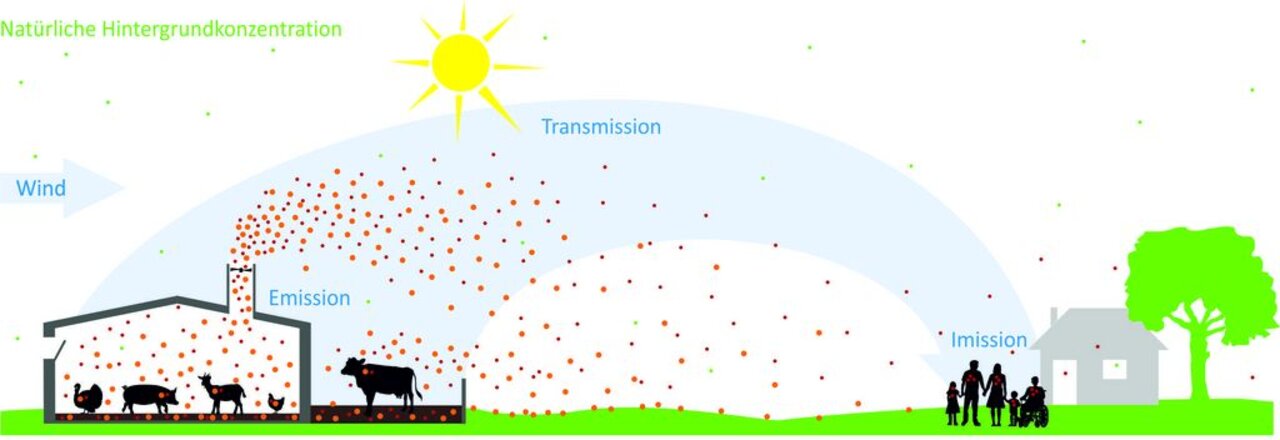Project
Investigation of the survivability of airborne microorganisms

Investigation of the tenacity of airborne microorganisms under real ambient air conditions
How long can bacteria survive in the air? Nobody knows that exactly. Not yet.
Background and Objective
From animal livestock large amounts of bacteria emit into the environment with the exhaust air. The health risks for the residents of the stables are not yet sufficiently clarified, mainly because it is largely unknown how long bacteria in the air are viable.
Approach
The aim of this project is to investigate the survivability (tenacity) of microorganisms in the airborne state under real ambient air conditions. For this purpose, a novel bioaerosol chamber is constructed and evaluated, which makes such investigations possible. Afterwards experiments on the tenacity of airborne microorganisms will be carried out in this chamber and the most important influencing factors on their tenacity will be identified. The project thus makes an important contribution to the question of safe distances between animal sheds and neighboring buildings. In the future it will be possible to estimate how long and under which conditions certain microorganisms in the airborne state remain viable and thus potentially infectious.
Thünen-Contact

Funding Body
-
Bundesland Freistaat Sachsen
(national, öffentlich)
Duration
8.2018 - 7.2021
More Information
Project status:
finished
Publications on the project
- 0
Clauß M, Linke S, Huf A (2023) How long do bacteria survive in the air? Braunschweig: Thünen Institute of Agricultural Technology, 2 p, Project Brief Thünen Inst 2023/37a, DOI:10.3220/PB1693216057000
- 1
Clauß M, Linke S, Huf A (2023) Wie lange überleben Bakterien in der Luft? Braunschweig: Thünen-Institut für Agrartechnologie, 2 p, Project Brief Thünen Inst 2023/37, DOI:10.3220/PB1693215094000
- 2
Clauß M, Gessner A, Janicke U, Kummer V, Lohberger M, Müller WJ, Petrich R, Salzmann M, Winkler G (2022) Ausbreitungsmodellierung von Bioaerosolen : Grundlagen und Eingangsparameter ; VDI-Statusreport [online]. Düsseldorf: VDI Verein Deutscher Ingenieure eV Technik und Gesellschaft, 32 p, zu finden in <https://www.vdi.de/ueber-uns/presse/publikationen/details/ausbreitungsmodellierung-von-bioaerosolen> [zitiert am 07.07.2022]
- 3
Clauß M, Linke S, Tautz C, Bromann S (2022) Development of a novel bioaerosol chamber to determine survival rates of airborne Staphylococci. Atmosphere 13(6):869, DOI:10.3390/ atmos13060869
- 4
Clauß M, Linke S, Tautz C, Bromann S (2021) Tenazität luftgetragener Mikroorganismen : Untersuchung der Tenazität luftgetragener Mikroorganismen unter möglichst realen Außenluftbedingungen ; Abschlussbericht zum Projekt "TeluMi". Dresden: Sächsisches Landesamt für Umwelt, Landwirtschaft und Geologie, 95 p, Schriftenr LfULG 19/2021

![[Translate to English:] [Translate to English:]](/media/_processed_/3/6/csm_Hintergrund-Ausschnitt1_9daaef6b89.jpeg)
![[Translate to English:] [Translate to English:]](/media/_processed_/3/6/csm_Hintergrund-Ausschnitt1_0bd7111163.jpeg)




